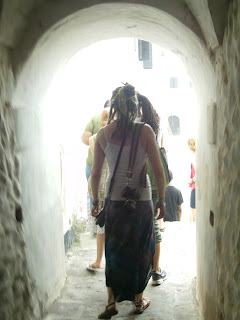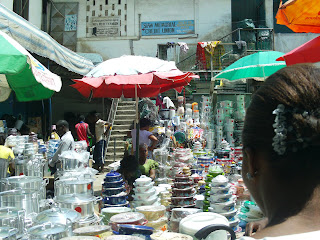Our first destination in Kumasi was the 20th century palace of the recently deceased Asantehene, Otumfo Opoku Ware II. In this palace, called Manhiya, the textbooks came alive. We witnessed the extent of personal wealth and near universal acclaim from from both West and East, with medals and gifts from Great Britain, the United States and Ethiopia to past Asantehenes and the present one, Otufu Osie Tutu II. We heard tales of both the internal African conquests of the Asante and the 20th century conquest by the British. Hearing the histories illuminated us to the fact that the Scramble for African had both African winners and losers. After seeing the political center of Asanteland we were ready to explore key cultural elements.
The aforementioned villages are said to be the home of three important cultural practices of the Asante: Kente cloth, Adinkra symbols, and Wood carving. Kente cloth, according to many originating in the village of Bonwire, is a product of weaving several threads together resulting in a wonderfully artistic and colorful tapestry that is known throughout the world. We learned that certain patterns are reserved for royalty and also have additional meetings. On that note we also travelled to the Adinkra village, Ntonso, whose symbols contain and allow transmission of central tenants of Akan philosophies. The symbols are seen throughout Ghana, showing up on billboards, buildings, clothing and on woodcarvings. We saw many of these woodcarvings in a village, called Ahwiaa, which put on display Ghana's abilities to work wonders with wood. Student and visitor alike was treated with Ghana's wildlife, philosophies and central symbols rendered with the products of Ghana's hinterland. Leaving Kumasi was difficult both literally and figuratively, leaving a city so central Ghana's history and culture and as the busy intersections eroded into mud roads full of holes during our push north to Ghana's largest wildlife preserve, Mole.































































